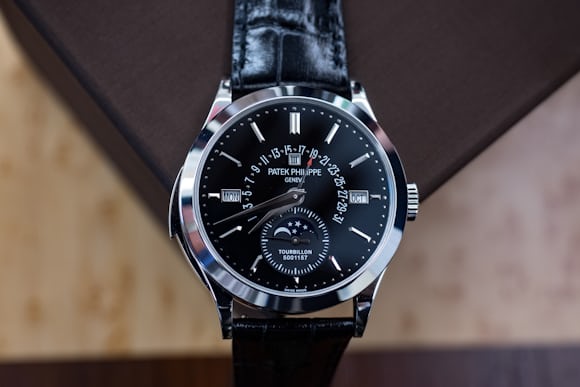In-Depth: Hammers And Gongs – Talking Traditional Minute Repeater Magic With Patek Philippe (And That One Story About Horse Urine)
By Jack Forster
Twice in my life I have been fortunate enough to hear multiple Patek Philippe minute repeaters doing their thing, and the most recent was under interesting circumstances. Patek Philippe is generally, well, you wouldn’t say uncommunicative, but they do have the natural reticence that you’d expect from a family-owned haute horlogerie firm. Let’s go with discrete. However, over the last few years, the company has also begun holding periodic educational seminars, which, though of course they focus on Patek Philippe wristwatches and history, also offer a great deal of very useful, generally-applicable information on watchmaking. The last such educational event I was part of was a full-day workshop on static and dynamic poising (which, if you’re of a similar turn of mind to mine, is pretty exciting, white-knuckle stuff, and I’m being totally serious). The most recent, however, was a workshop on minute repeaters, during which we discussed everything from manufacturing gongs, to case construction, to how repeaters are tested and validated for release at Patek – and, yes, horse urine as well; and thereby hangs a tale.
The history of chiming watches is generally pretty well known, at least in broad outline. Telling the time acoustically is the oldest known method, at least in mechanical horology in Europe, and it’s generally thought that the earliest clocks with mechanical escapements had no hands, nor a dial, but rather told the time by ringing a bell. A watch or clock can ring the time either “in passing,” which means that the time is rung automatically at the hours and quarter hours, or “on demand,” which means that the owner can operate a button or slide, and the movement will ring the time at the moment it’s activated.
The word “repeater” means on-demand striking. The first repeaters were English, and the first patent for a repeating watch was granted to Daniel Quare all the way back in 1687. Watches that chime the hour, and the nearest quarter hour, were the first repeating watches, and gradually more precise chiming watches were developed, until finally the minute repeater appeared – the very first that we know of were made in Germany, around 1720.

“It cannot be disputed that repeater-work is really the scientific part of horology. Therefore it …read more







